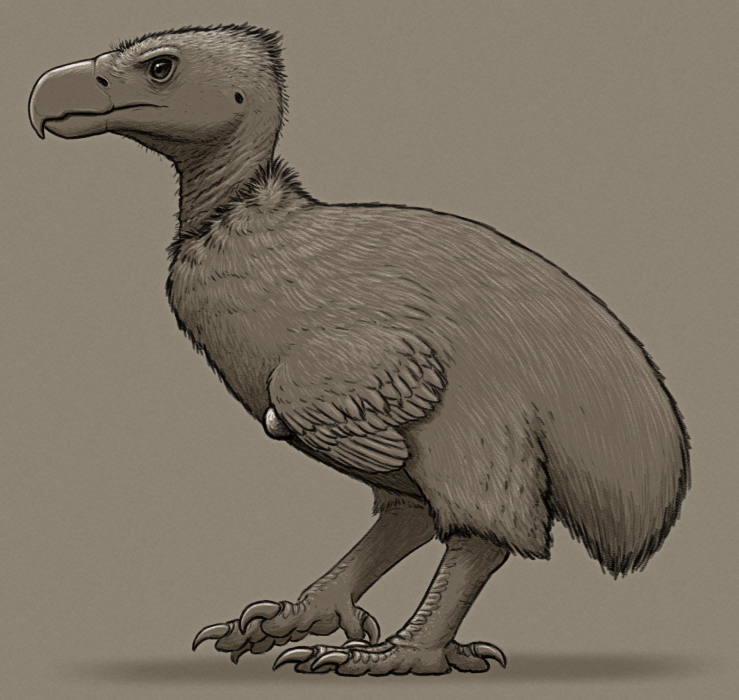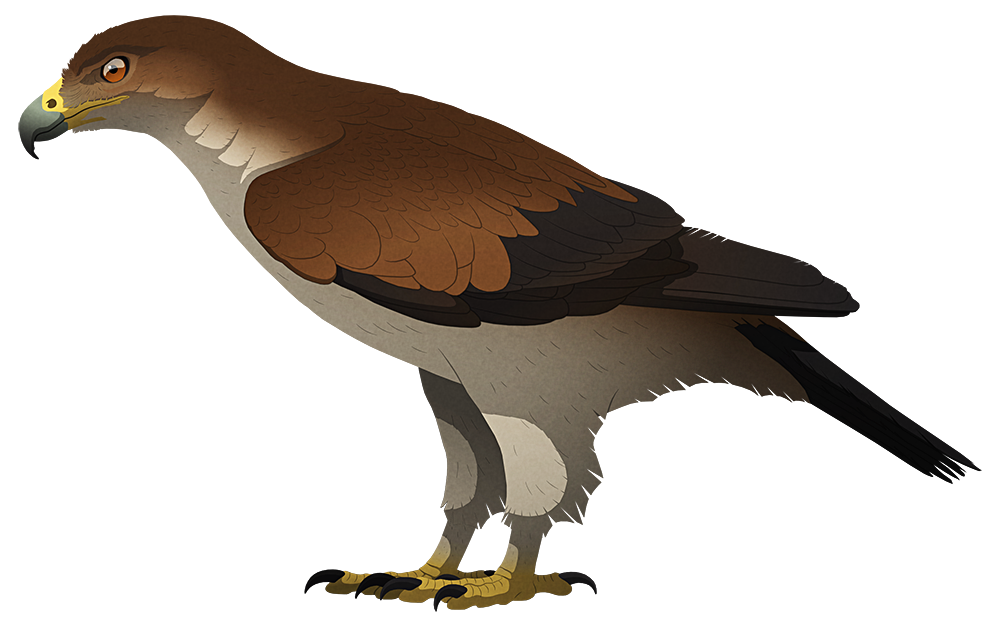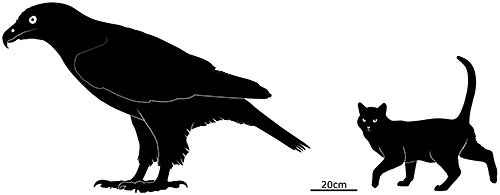September might have ended, but guess what? I am not remotely done with this yet so we’re continuing on.
Now it’s Spectober.
(Also just a reminder: I am not currently taking new requests. I’ve got far too many existing ones that I’m still working through!)
Someone who identified themself only as “Adam” asked for “eagles evolving into terrestrial predators to pursue larger prey”:

A flightless eagle occupying an apex predator niche in the same island chain as the giant herbivorous tegu, Terraetus adamii is descended from a species similar to the modern harpy eagle. It isn’t substantially larger than the biggest modern eagles – standing about 1.2m tall (~4′) – but it’s certainly much more massive, weighing around 25kg (~55lbs).
In the absence of other large terrestrial predators its ancestors originally took up a caracara-like lifestyle, preferring hunting on foot over flying, before gradually becoming totally flightless and converging on terror birds with large heavy skulls, reduced wings, and powerful legs.
Terraetus’ head is only very sparsely feathered, an adaptation for feeding inside the carcasses of large prey, which it dispatches using a combination of kicking and blows from its large hooked beak. It’s usually a solitary hunter that can tackle prey up to two or three times its own weight – preferencing the juveniles of the herbivorous tegu – but during the breeding season pairs will occasionally hunt cooperatively to take down larger targets.
Despite possessing sharp beaks and talons, these weapons aren’t actually used in fights between individuals of this species. Instead they bodily shove each other back and forth, battering at each other with large bony knobs that grow from the hand bones of each wing.



